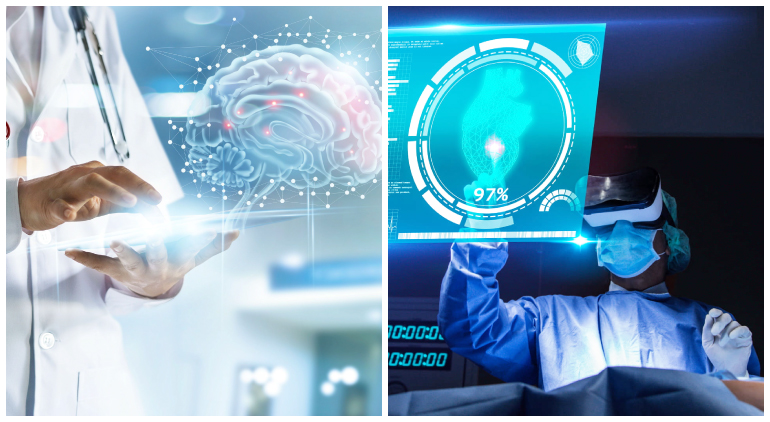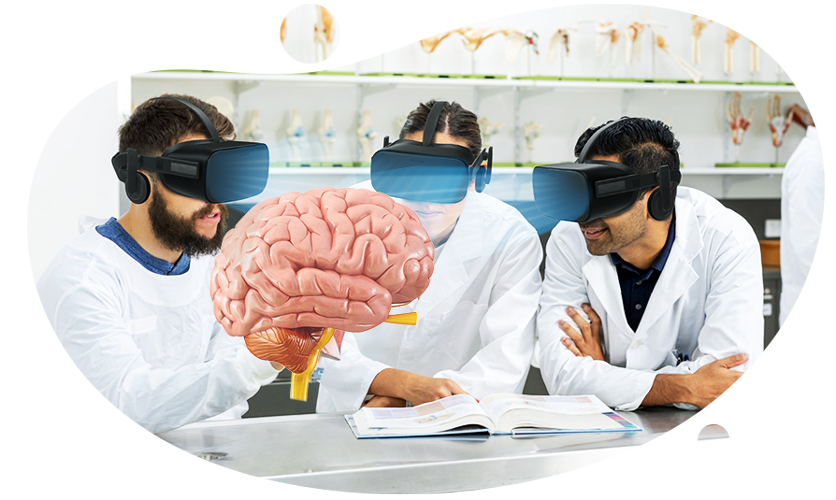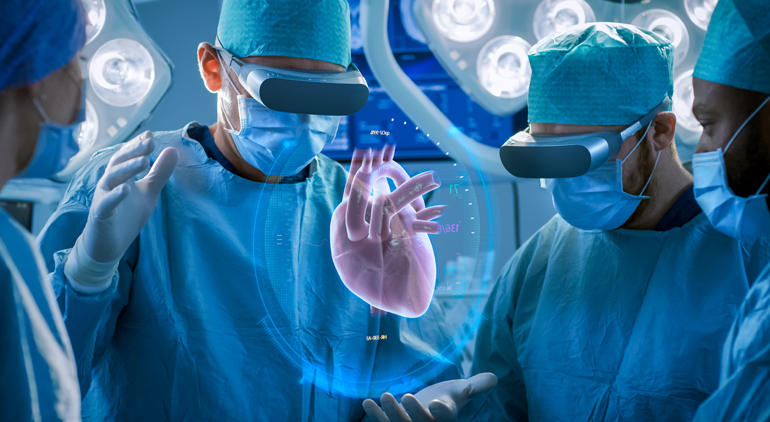How AR VR Changing Medical Education and Training Field?

All industries from retail and entertainment to medicine and engineering are dipping their hands into computer technologies, namely, Augmented Reality (AR) and Virtual Reality (VR).
While these technologies have been up and about in our world for decades, their benefits are only leisurely revealing themselves. But from all that is known of AR and VR, it will soon be the primary technology at play for all industries.
The future of this generation's work-life will be predominantly based on being able to work with AR and VR systems in their own area of expertise.
Though these technologies are easy to use, allowing students of all fields specifically VR for engineering and medical students to imbibe their uses is important.
Considering how much of an impact AR and VR have had on medicine, it will not be long before all of the technology shifts to AR and VR technologies at hospitals.
In order to keep updated, medical education must bend towards the demands of medicine as a discipline itself and where it is heading. In simpler words, medical education should cater to students by providing AR and VR technologies, which will be required skills in the medical field soon enough.
But before accepting that, AR and VR applications in medical practice and education will become an inevitable part of the medical field; we must mark their progress and impact in medical education today.
1. Empathy
While many think AR and VR technologies can make people lose sight of their surroundings and become completely oblivious of what’s happening around them, this is not true. VR medical technology would especially disagree.
This is because healthcare workers have found a way, through VR medical technology, to be able to empathize with their patients and relatives of the patient and be able to understand their situation and interact with them with more understanding and knowledge of the situation.
VR in medical technology used in the University of New England allows medical students to experience problems like vision and hearing impairment. They can even understand what it is like for old people with more severe problems such as advanced macular degeneration.
This kind of simulation not only allows students and healthcare workers to gain a robust and unbiased medical assessment of the situation but also allows them to feel empathetic towards their patients, which would naturally impact the quality of work positively.
See Also: nursing education simulations
2. Immersive Learning In Medical Education
The main feature of AR and VR technologies includes its one-of-a-kind immersive experience. Mixed Reality (MR) along with Augmented reality in medical training and VR in medical education, allows students to view and interact with actual organs and the different parts of the human body.
These options are limited without AR and VR technology and currently, physical 3D models are used which have limited usability. With medical based VR applications such as HoloAnatomy and 3DOrganon, students can rotate a body.
Enlarge organs to see details and further dissect it to see inner structures and systems. Both of these award-winning applications require VR headsets in order to be used.
However, this is only the beginning of how far AR and VR can change medical education for the better. At Stanford University, medical students are using medical VR labs in order to see inside organs and detect where and how the problem is emanating.
A student can virtually place themselves inside the simulation of the heart of a child and take a walk around to observe the problem!
3. VR in Medical Training
VR in medical Training for medical students becomes much more realistic and enhanced by applying AR and VR technologies. Forementioned VR-based applications that zoom into the human anatomy like HoloAnatomy.
3D Organon can allow augmented reality medical training for students to be less dependent on the availability of medical labs or the availability of professors and lab experts. Medical students find a way to be exponentially self-sufficient without having to compromise on the quality of learning.
Learn more: Benefits of VR Labs for Higher Education
An experiment conducted by Google using Google Glasses also focuses on how VR learning allows for more accuracy than simple visual learning. The study taught a skill to two groups either visually or through VR, wherein the group learned the skill by doing it.
The results showed VR to be a clear winner in terms of efficiency. Applying VR in medical education could allow lesser medical errors from future doctors.
"Unlock the future of medical education and training with AR/VR – immerse yourself in cutting-edge learning experiences, revolutionize your skills, and elevate patient care to unprecedented levels."
4. Practicing Surgical Training in VR
Being able to practice surgeries and study them beforehand is perhaps one of the most beneficial transformations that we will see of AR and VR applications in medical practice and education. Augmedics’ ARGUS System has developed a method.
wherein doctors use AR technology to provide instructions. Spine surgeries have been proven to be especially successful through this system and has become less invasive.
This is possible due to the ability of AR and VR technology to show the formation of the spine and where the problem is through the skin. See Also: Augmented Learning is Disrupting Medical Education
See Also: Augmented Learning is Disrupting Medical Education
which allows doctors to then skip the process of cutting open the skin and slicing or drilling the bone. This is the anticipated use of the Augmedics’ ARGUS System.
However, introducing this technology to medical education could allow them to advance the uses of AR and VR in the medical field further and increase the efficiency of other operations as well.
The future of most industries is reliant on AR and VR technology, but its benefits will be most beneficial to the medical field. Medical education needs to be prepared for this transformation and accept it sooner than later, in order to keep all healthcare workers updated about advanced medicine.




